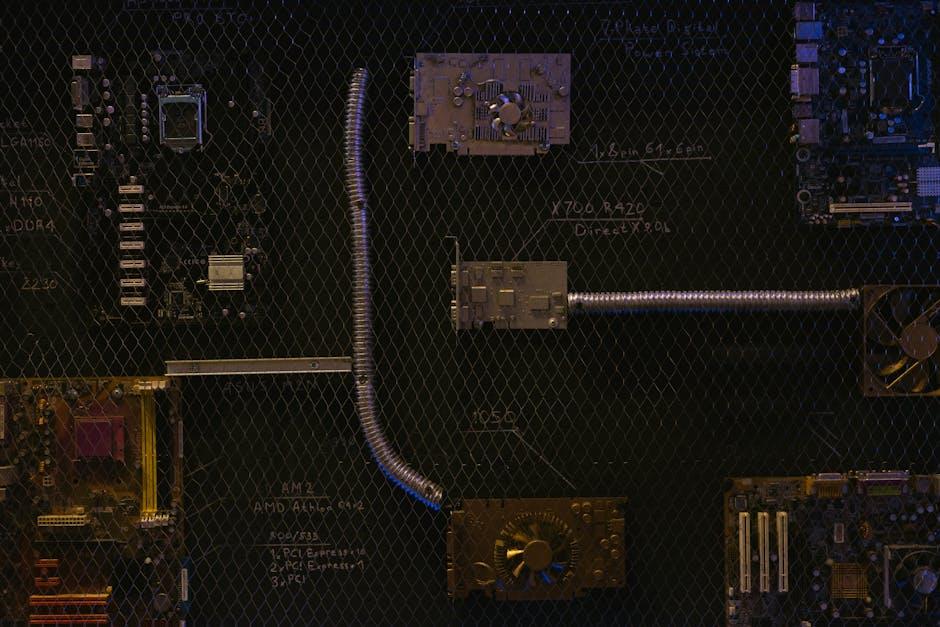In the vast and ever-evolving digital landscape, where data flows ceaselessly and cyber threats lurk in the shadows, the battleground for security is more complex than ever before. Enter artificial intelligence-a powerful ally shaping the future of cybersecurity. By harnessing advanced algorithms and machine learning, AI is transforming the way we detect, analyze, and respond to malicious activities. This article explores the pivotal role AI plays in identifying cyber threats, unraveling its capabilities and challenges in protecting the digital realm from unseen adversaries.
Understanding the Evolving Landscape of Cyber Threats through AI

Artificial Intelligence has revolutionized the way cybersecurity professionals approach threat detection. By leveraging advanced machine learning algorithms, AI systems can analyze vast amounts of data with incredible speed, identifying patterns and anomalies that would be impossible for human analysts to detect in real-time. This proactive approach not only mitigates risks but also anticipates potential attack vectors before they can be exploited. Modern AI tools are designed to continuously learn from new cyber threats, adapting their detection methods to stay ahead of increasingly sophisticated cybercriminal tactics.
Some of the key benefits AI brings to cyber threat detection include:
- Automated threat identification: Rapidly scans networks for suspicious activities without human intervention.
- Behavioral analysis: Recognizes unusual user and machine behavior indicative of breaches.
- Threat intelligence integration: Combines data from diverse sources to create comprehensive threat profiles.
| AI Capability | Impact on Cybersecurity | Example Use Case |
|---|---|---|
| Predictive Analytics | Forecasts potential attacks. | Preventing zero-day exploits. |
| Anomaly Detection | Identifies deviations in network traffic. | Spotting insider threats. |
| Natural Language Processing | Analyzes phishing emails. | Filtering malicious communications. |
Leveraging Machine Learning Algorithms for Proactive Threat Detection

Machine learning algorithms have transformed cybersecurity by enabling systems to anticipate threats before they manifest into full-fledged attacks. These algorithms process massive datasets to identify suspicious patterns, anomalies, and behavioral deviations that traditional rule-based systems often miss. By continuously learning from new data, they adapt swiftly to evolving threats such as zero-day exploits and sophisticated phishing campaigns. Not only do they analyze network traffic and user behavior, but they also correlate threat intelligence from diverse sources, empowering organizations to react proactively rather than reactively.
Key benefits of utilizing machine learning in threat detection include:
- Automated anomaly detection: Flagging unusual activities instantly with minimal human intervention.
- Reduced false positives: Fine-tuning alerts to focus on truly malicious events, improving analyst efficiency.
- Real-time threat identification: Accelerating response times by pinpointing attacks as they unfold.
| Algorithm Type | Use Case | Strength |
|---|---|---|
| Supervised Learning | Malware classification | High accuracy with labeled data |
| Unsupervised Learning | Anomaly detection | Detects unknown threats |
| Reinforcement Learning | Adaptive defense strategy | Dynamic response optimization |
Balancing Automation and Human Expertise in Cybersecurity

While AI-driven tools excel at rapidly scanning massive datasets and identifying patterns indicative of cyber threats, they are not infallible. The nuanced judgment of cybersecurity professionals remains critical in interpreting alerts, prioritizing responses, and developing adaptive strategies. Automation can efficiently handle repetitive tasks such as monitoring logs or blocking known malicious IPs, freeing experts to focus on complex threat analysis and decision-making that require deep contextual understanding.
Integrating AI and human expertise creates a dynamic defense system where each complements the other’s strengths. Key benefits include:
- Enhanced threat detection speed through continuous monitoring and real-time alert generation.
- Reduction in false positives by leveraging human insight to validate potential threats and refine AI models.
- Adaptive learning where human feedback improves AI algorithms, fostering an evolving, smarter defense.
| Aspect | AI Role | Human Role |
|---|---|---|
| Threat Detection | Pattern recognition at scale | Contextual threat validation |
| Response Prioritization | Automated alerts | Risk assessment and decision-making |
| Continuous Improvement | Data-driven learning | Insight-based model tuning |
Strategic Recommendations for Integrating AI into Cyber Defense Systems

To effectively embed AI within cyber defense frameworks, organizations should prioritize a phased integration approach. Begin by identifying key areas where AI can offer immediate impact, such as anomaly detection or automated threat response, ensuring a clear value proposition. Building a collaborative ecosystem that includes cybersecurity experts, data scientists, and AI specialists fosters continuous refinement of models and sharpens threat prediction capabilities. Emphasizing transparency and explainability in AI processes is crucial, enabling security teams to trust and act upon AI-driven insights confidently.
- Prioritize data quality: Clean, relevant datasets boost AI accuracy.
- Leverage hybrid defenses: Combine AI with traditional security methods.
- Invest in ongoing training: Keep AI models updated against evolving threats.
- Ensure system interoperability: Seamlessly integrate AI with existing tools.
- Establish clear governance: Address ethical and privacy concerns proactively.
| Integration Phase | Focus Area | Key Benefit |
|---|---|---|
| Initial | Threat Intelligence Analysis | Faster identification of attack patterns |
| Intermediate | Automated Incident Response | Reduced response time |
| Advanced | Predictive Behavioral Modeling | Proactive threat mitigation |
Equipping cyber defense systems with AI isn’t just a technical upgrade-it demands a culture shift embracing adaptive learning and proactive thinking. Security teams should be trained not only to manage AI tools but to interpret nuanced outputs and identify possible blind spots. Furthermore, organizations must enact feedback loops where AI algorithms learn from false positives and negatives, improving detection precision over time. Balancing automation with human oversight ensures a resilient, responsive defense posture capable of countering sophisticated cyber adversaries in an ever-changing landscape.
The Way Forward
As the digital battleground continues to evolve, AI stands as both a watchful sentinel and a relentless strategist, tirelessly sifting through the shadows where cyber threats hide. While it is no silver bullet, its ability to learn, adapt, and respond at machine speed marks a new era in cybersecurity. Embracing AI’s potential not only strengthens our defenses but also challenges us to remain vigilant and thoughtful in its application. In this unfolding story of human and machine collaboration, the future of cyber threat detection is less about machines replacing minds and more about empowering them – together forging a safer digital world.














